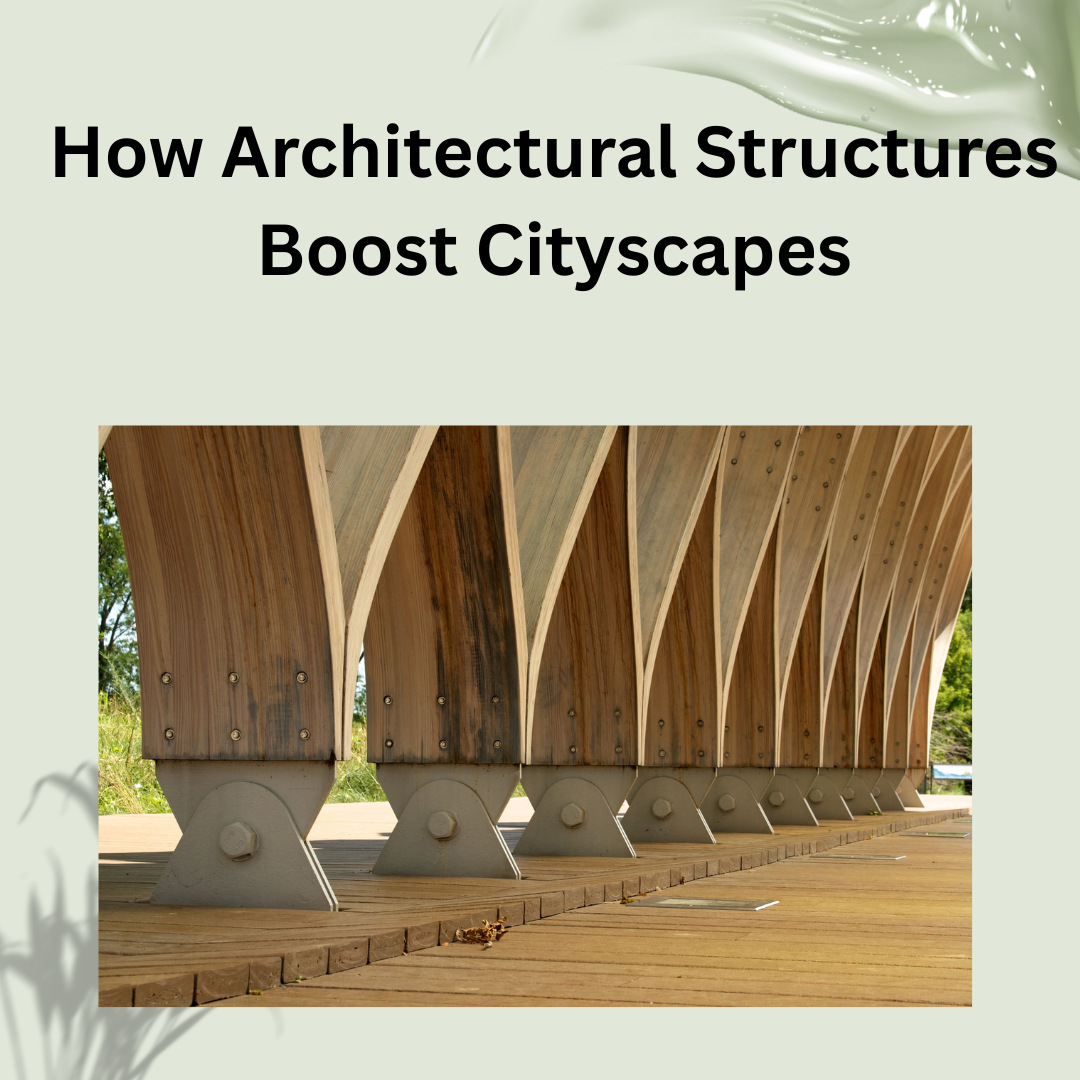Architectural structures play a pivotal role in shaping the identity and visual appeal of a city. From the towering skyscrapers that define a skyline to the intricate details of heritage buildings, architecture influences not only the physical environment but also the social and economic dynamics of a city. As urbanization continues to rise globally, understanding the impact of architectural structures on cityscapes has become more important than ever.
In this article, we will explore the various ways in which architectural structures enhance cityscapes, from aesthetic and cultural value to economic growth and social well-being. We’ll also look at how modern innovations are driving urban development and how architectural design can help create sustainable and livable environments.
NOTE:- Almaha Metal delivered outstanding architectural structure works for residential and commercial sectors, adding value and elegance to each design. With a focus on durability and aesthetics, we exceeded client expectations. Get in touch with Almaha Metal today to explore how we can enhance your next structure.
The Role of Architecture in Defining City Identity
One of the most profound impacts of architectural structures is their ability to define the identity of a city. Iconic buildings such as the Eiffel Tower in Paris, the Burj Khalifa in Dubai, or the Sydney Opera House in Australia are not only landmarks but also powerful symbols of the cities they represent. These structures become intrinsic parts of the city’s identity, attracting millions of tourists and helping to shape the city’s global perception.
Creating a Sense of Place
Architectural structures are central to the creation of a city’s sense of place. They help establish an area’s character by influencing the way people perceive and interact with the environment. Well-designed buildings can evoke feelings of pride, inspiration, and belonging. For instance, well-planned public spaces like parks and plazas, paired with aesthetically pleasing structures, can serve as gathering points that encourage social interaction and community engagement.
Historical and Cultural Significance
Many architectural structures also hold historical and cultural significance, preserving the heritage of a city while simultaneously enriching its present. Historic buildings, monuments, and landmarks connect current generations to their city’s past, fostering a deeper sense of pride and continuity. For instance, cities like Rome or Athens, known for their ancient ruins and classical architecture, leverage their built environment to keep their history alive for visitors and residents alike.
Aesthetic Appeal and Urban Design
One of the most immediate effects of architectural structures on cityscapes is their aesthetic appeal. Thoughtful urban design and visually appealing architecture transform ordinary urban spaces into places of beauty and intrigue. The relationship between form, space, and materials within architectural design can significantly enhance the visual interest of a city.
Architectural Styles and Urban Cohesion
A city’s architectural landscape is a visual reflection of its diversity, history, and culture. The blending of different architectural styles creates a cityscape that feels dynamic and ever-evolving. Modern and contemporary architecture often coexists with older, classical structures, creating an eclectic mix of design styles. This fusion allows a city to display its unique personality while maintaining a sense of urban cohesion.
Well-thought-out urban planning ensures that new buildings complement existing structures, maintaining harmony between old and new. This kind of integration contributes to the aesthetic appeal of a city, making it more attractive to residents, visitors, and businesses.
Green Architecture and Sustainable Design
Sustainability is a major consideration in modern architectural design. Green buildings, sustainable materials, and energy-efficient technologies help reduce the environmental impact of new structures. Incorporating green architecture, such as green roofs, solar panels, and rainwater harvesting systems, contributes to the environmental sustainability of a city while also improving its aesthetic value. These eco-friendly designs add to the overall beauty of the urban landscape by integrating nature into the built environment.
Economic Impact of Architectural Structures
Architectural structures do not only contribute to a city’s aesthetic value; they also have a significant impact on its economic development. A well-designed cityscape can attract investment, create jobs, and boost tourism, all of which contribute to the economic health of a city.
Boosting Tourism and International Recognition
Architectural landmarks often become key attractions for tourists. Iconic structures like the Great Wall of China or the Taj Mahal draw millions of visitors each year, generating significant revenue for local economies. In addition to generating direct economic benefits through tourism, these structures can raise a city’s profile on the global stage, attracting international recognition and investment opportunities.
Cities like Dubai, which have invested heavily in iconic architectural structures, are reaping the benefits of global tourism and international business opportunities. The Burj Khalifa, for instance, not only acts as a symbol of Dubai’s progress but also draws thousands of visitors each year, generating revenue from both tourism and real estate development.
Enhancing Real Estate Value
Well-designed architectural structures also have a direct impact on property values. Developments that incorporate modern designs and sustainable practices often lead to increased demand for real estate in those areas. As cities become more attractive and livable, there is a tendency for urban renewal projects to attract both residential and commercial investments.
Additionally, iconic structures or large-scale developments can spur gentrification in previously underdeveloped neighborhoods. While this may raise property values, it also brings new services and infrastructure to these areas, creating opportunities for economic growth and social mobility.
Social and Environmental Benefits
Beyond aesthetics and economics, architectural structures also contribute to the social and environmental fabric of a city. Thoughtfully designed urban spaces create more inclusive, accessible, and vibrant environments for everyone, from residents to visitors.
Promoting Social Interaction and Community Building
Public architectural structures such as squares, parks, and cultural centers foster social interaction and community engagement. By providing spaces for people to gather, share experiences, and engage in cultural activities, these structures promote social cohesion. This, in turn, enhances the overall well-being of residents and contributes to the vibrancy of a city.
For instance, open-air markets, performance spaces, and pedestrian-friendly streets not only enhance a city’s aesthetic but also encourage positive social interactions. These social spaces play an important role in creating a sense of belonging and community.
Enhancing Public Safety and Quality of Life
Architecture can also have a profound impact on the quality of life and public safety. Well-designed buildings and spaces can make a city safer and more comfortable by improving lighting, visibility, and pedestrian flow. Urban design principles such as Crime Prevention Through Environmental Design (CPTED) encourage architects to consider how the built environment can reduce crime and enhance safety.
Additionally, architecture that promotes walkability, provides access to green spaces, and integrates nature into urban areas can improve the overall quality of life for residents. The inclusion of parks, pedestrian paths, and bike lanes can encourage healthier lifestyles, reduce traffic congestion, and create more sustainable cities.
Innovation and the Future of Cityscapes
As technology continues to evolve, the future of architectural structures will bring even more innovations that will redefine cityscapes. Smart buildings, artificial intelligence, and advanced construction techniques are poised to make cities more efficient, sustainable, and livable.
Smart Cities and Technological Integration
With the rise of smart cities, architectural structures will increasingly be integrated with technology to improve urban living. Smart buildings will feature advanced technologies such as automated systems for energy management, waste recycling, and temperature control. These innovations not only make cities more sustainable but also enhance the convenience and comfort of residents.

Adaptive Reuse and Sustainability
Another key trend in the future of architectural design is adaptive reuse, where older buildings are repurposed for new functions. This practice allows cities to preserve their architectural heritage while making use of existing structures to accommodate new needs. For example, abandoned factories or warehouses are often transformed into trendy lofts, offices, or cultural spaces, breathing new life into the urban landscape.
Conclusion
Architectural structures are far more than just buildings; they are integral components that shape a city’s identity, enhance its aesthetic appeal, and drive its economic and social growth. From iconic landmarks to sustainable urban designs, these structures contribute to creating vibrant, livable, and thriving cityscapes. As cities continue to evolve, architecture will remain at the heart of shaping the future, ensuring that urban environments continue to inspire and support the people who live and work in them.
For more insightful articles related to this topic, feel free to visit – viewsparrow












